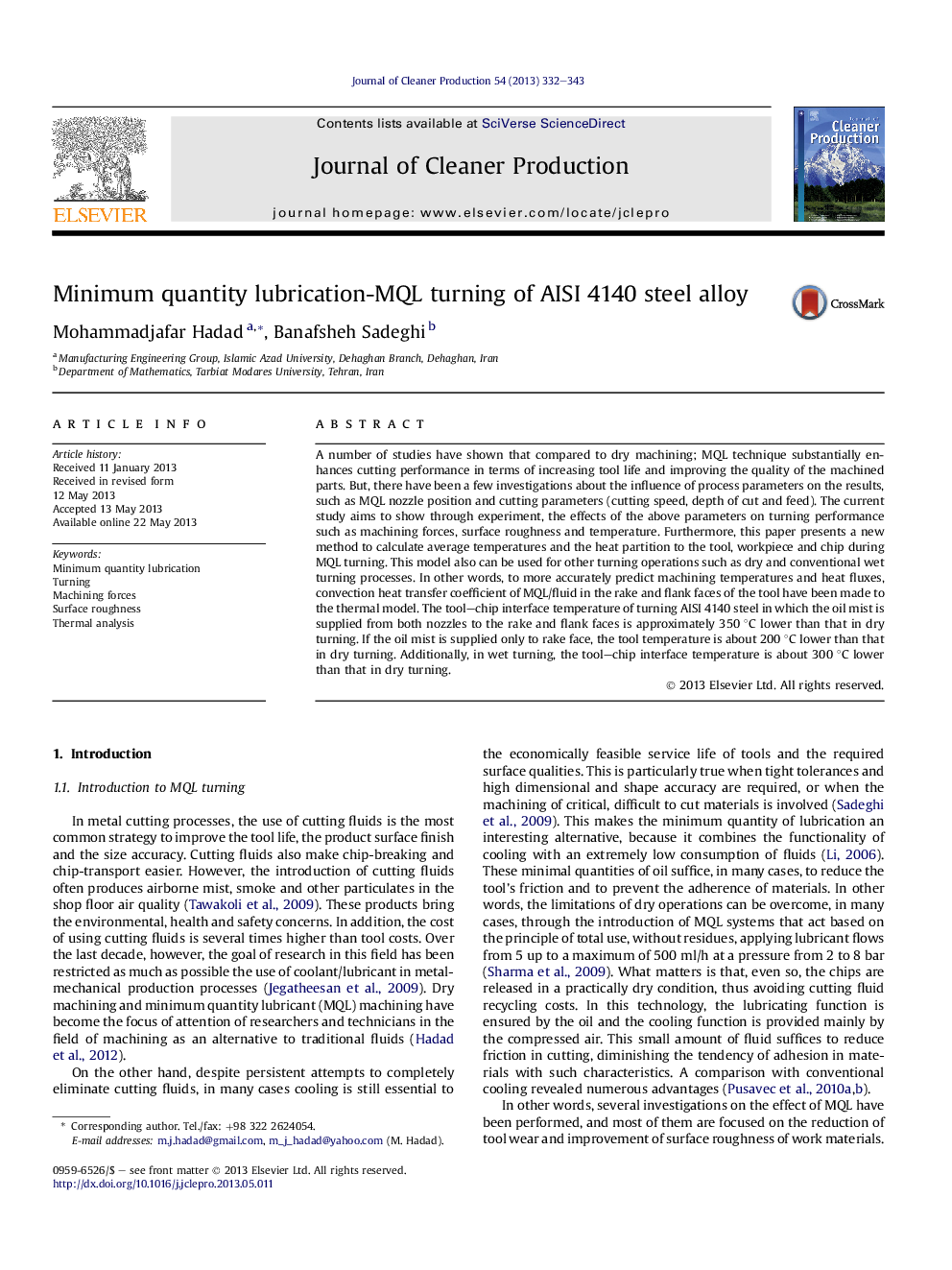| کد مقاله | کد نشریه | سال انتشار | مقاله انگلیسی | نسخه تمام متن |
|---|---|---|---|---|
| 1745311 | 1522192 | 2013 | 12 صفحه PDF | دانلود رایگان |

• Analytical modelling of temperature and energy partition in MQL turning was studied.
• The effects of the machining parameters on MQL turning performance are investigated.
• The optimum MQL and turning parameters have been determined to reduce machining forces and thermal damages.
A number of studies have shown that compared to dry machining; MQL technique substantially enhances cutting performance in terms of increasing tool life and improving the quality of the machined parts. But, there have been a few investigations about the influence of process parameters on the results, such as MQL nozzle position and cutting parameters (cutting speed, depth of cut and feed). The current study aims to show through experiment, the effects of the above parameters on turning performance such as machining forces, surface roughness and temperature. Furthermore, this paper presents a new method to calculate average temperatures and the heat partition to the tool, workpiece and chip during MQL turning. This model also can be used for other turning operations such as dry and conventional wet turning processes. In other words, to more accurately predict machining temperatures and heat fluxes, convection heat transfer coefficient of MQL/fluid in the rake and flank faces of the tool have been made to the thermal model. The tool–chip interface temperature of turning AISI 4140 steel in which the oil mist is supplied from both nozzles to the rake and flank faces is approximately 350 °C lower than that in dry turning. If the oil mist is supplied only to rake face, the tool temperature is about 200 °C lower than that in dry turning. Additionally, in wet turning, the tool–chip interface temperature is about 300 °C lower than that in dry turning.
Journal: Journal of Cleaner Production - Volume 54, 1 September 2013, Pages 332–343